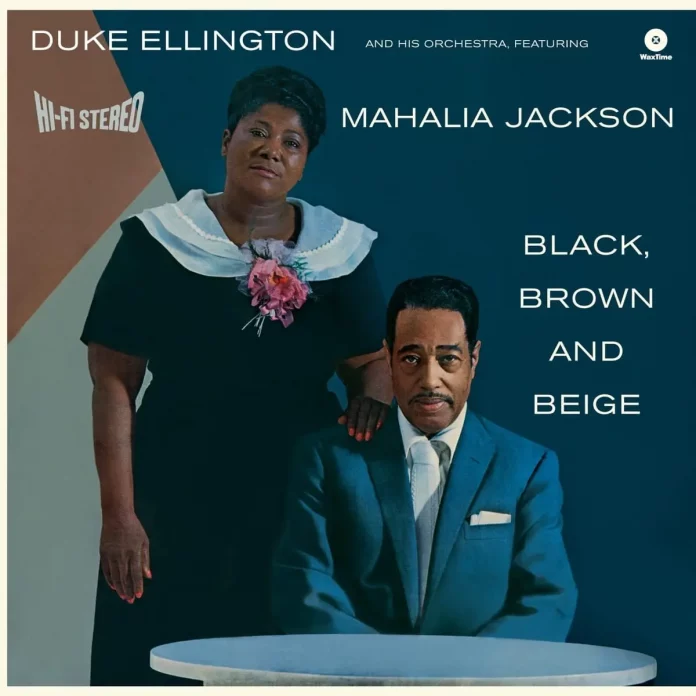Always absorbed with innovative, unorthodox ideas for composition and arrangement, Ellington frequently aspired to create extended works, reaching towards the structure of classical suites and concertos.
In June 1943 he premiered in live performance at Carnegie Hall an ambitiously extended suite which he named Black, Brown And Beige, in a personal tribute to the troubled history of the American negro. It met with a very unenthusiastic reception from the critics, who complained of a random and patchwork structure lacking coherence and cohesion, but acknowledged some fine solos. In general, most people didn’t want Ellington’s extended creations and the theme’s direct connection to racial issues was perhaps risky in 40s America.
Eventually, in December 1944, a truncated version (18 minutes) was crammed on to two 12-inch 78s for Victor, with Hodges and Nanton outstanding. By 1958, with LPs now handling longer pieces with ease, Duke finally recorded a much changed version of his suite. He abandoned several sections of his original composition – a rather odd, perhaps regrettable decision – and focused on updated reworkings of its two main themes, Come Sunday and Work Song.
On side A Part 1 (Work Song), Sam Woodyard’s heavy, insistent 4/4 tom-tom beat suggests hammer blows behind a simple repeated theme. Quentin Jackson recreates Tricky Sam Nanton’s earlier outstanding muted solo, the “ya-ya” sound uncannily close to that of a male voice. Part 2 (Come Sunday) is a serene, beautifully orchestrated study, suggesting church gatherings and peaceful tranquillity. Part 3 (Light) gets away from mood painting and moves into tempo for some more upbeat swinging in typical ducal style.
Side B features in Part 4 special guest Mahalia Jackson, whose magnificent gospel voice delivers a powerfully moving vocal version of Come Sunday. After Ray Nance’s violin feature (Part 5) Mahalia closes the album with a rendition of the 23rd Psalm, not for me a particularly relevant idea.
Three bonus tracks add two part-takes from Mahalia and an alternative version of Nanton’s interlude.
If Ellington wished in 1958 to silence his former critics, then ditching several colourful sections from his earlier version (e.g. the West Indian influence, Emancipation Celebration, Sugar Hill Penthouse) surely restricted his scope, besides making the whole idea seem rather pointless. This said, even less successful Ellington is never devoid of musical treasure.
On this album, fine contributions from Quentin Jackson, Harry Carney, Shorty Baker, Ray Nance and Mahalia Jackson amply reward listening.
Discography
Part 1 (Work Song); Part 2 (Come Sunday); Part 3 (aka Light) (20.27) – Part 4 (Come Sunday feat. Mahalia Jackson); Part 5 (Come Sunday Interlude); Part 6 (23rd Psalm feat. Mahalia Jackson); Part 4 (alt); Part 5 (alt); Part 6 (alt) (25.10)
Duke Ellington Orchestra: Cat Anderson, Harold “Shorty” Baker, Clark Terry (t); Ray Nance (t, vn); Quentin Jackson, Britt Woodman (tb); John Sanders (vtb); Jimmy Hamilton (cl); Russell Procope (as, cl); Billy Graham (as); Paul Gonsalves (ts); Harry Carney (bss, bcl, cl); Duke Ellington (p); Sam Woodyard (d); Mahalia Jackson (v) Los Angeles, 4, 5, 11 & 12 February 1958.
Wax Time 772220
















